
views
Giving a Frequently Used Pot a Quick Rinse
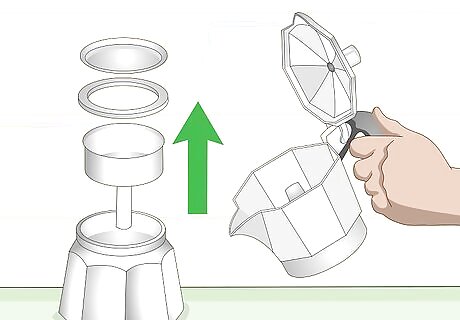
Take the pot apart. First, wait for it to cool down until it's safe to handle. Then unscrew the top piece (the server) from its base (the boiler). Next, take the funnel out of the boiler and empty the grounds into the trash.
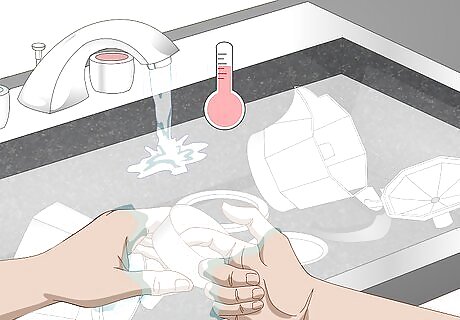
Rinse the pieces under hot water. Give the server, funnel, and boiler a thorough rinse both inside and out. Use your fingers or a clean, soapless sponge to rub away any visible residue that doesn't wash away with the water. Do not use dish soap or scrub too vigorously, though. Dish soap will dull the pot's shine over time. It will also leave behind a lot of soapy residue, which will require excessive rinsing in order to avoid a soapy aftertaste to your next batch of coffee, especially if the pot is made from aluminum. Dish soap and/or excessive scrubbing will also strip the insides of the coffee's oils. These oils actually form a barrier that helps reduce the risk of corrosion from water.

Wipe dry. Give each piece a couple shakes to get rid of some of the water. Then wipe away as much excess as you can with a clean dishtowel. Next, use a fork or butter knife to remove the rubber gasket from the bottom of the server. Remove the funnel filter, too, so you can dry these two pieces individually, plus the bottom of the server.
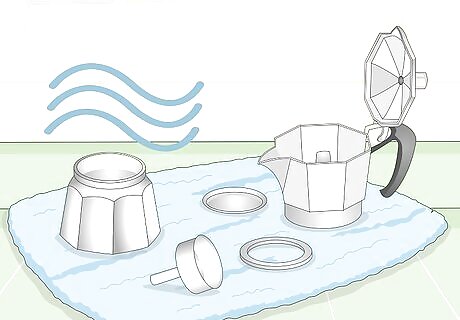
Air-dry and leave unassembled. Place the pieces on a fresh towel or a drying rack. Leave until they have thoroughly dried. To ensure that no moisture collects (which can cause corrosion), store as is, in separate pieces, until next use, rather than put it back together again.

Clean more thoroughly periodically. If you use your pot on a daily basis, a quick rinse in hot water will suffice most of the time, since the coffee oil inside the pot protects it from corrosion. However, expect these oils to grow rancid over time. Give it a more thorough cleaning about once every week or two.
Giving Your a Pot a More Thorough Cleaning
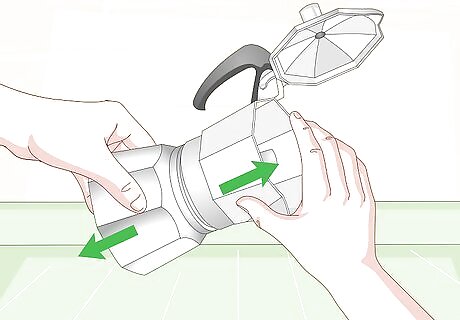
Break the pot down. Unscrew the server from the boiler, take out the funnel, and toss out the grounds. Use a fork or butter knife to pry the rubber gasket from the bottom of the server. Remove this as well as the funnel filter.
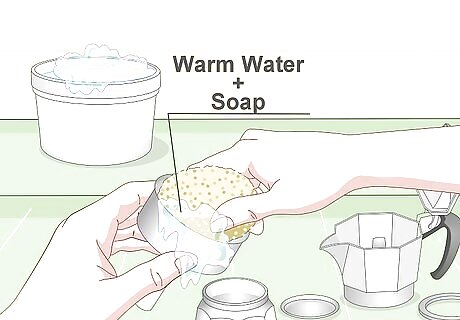
Wash in warm, soapy water. Scrub all pieces thoroughly with mild dish detergent and a sponge. Pay particular attention to the overpressure valve to make sure it remains unobstructed. Do not use anything abrasive, like baking soda or a hard-bristled brush, since abrasive materials can scratch and mar your pot. Rinse each piece repeatedly in clean water to remove all traces of soap. Any soap that's left behind can cause your coffee to taste like it. So err on the side of caution and continue rinsing for another minute or so after it seems like you rinsed all the soap out. As an alternative to soap, consider a cleaner designed specifically for coffee makers, such as Cafiza or JoeGlo.

Inspect and clean the filter and funnel. Expect the holes in these to occasionally become clogged by coffee grounds. Give them a look over to see if any are blocked. Poke any blockage out with the sharp end of a safety pin, then wash and rinse again.
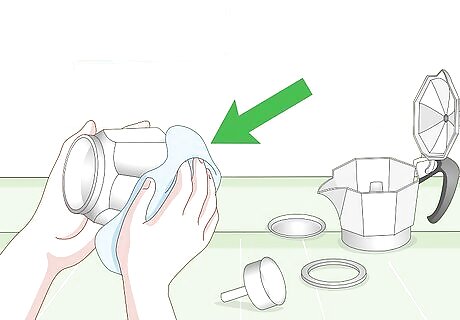
Hand dry, air-dry, and store as is. Dry each piece as best as you can with a hand towel. Then set them on a fresh towel or drying rack so they can air-dry. Store unassembled to eliminate the risk of moisture building up during non-use.
Taking Additional Care
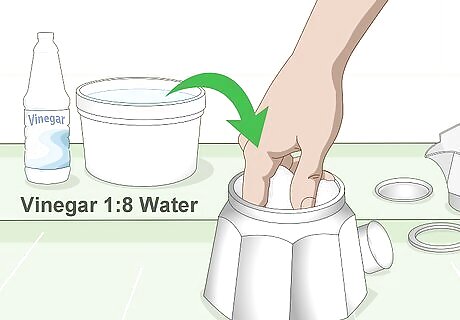
Clean mineral deposits as needed. Expect the metal to oxidize and create mineral deposits over time, especially if it didn't dry thoroughly. Inspect the insides of the boiler and server for discoloration every now and then. Correct these by mixing one part white vinegar with eight parts water and using this to scrub out the inside, and/or let it sit overnight in the boiler. It's also important to do this in order to keep the boiler's overpressure valve clear of any deposits that may be blocking it.
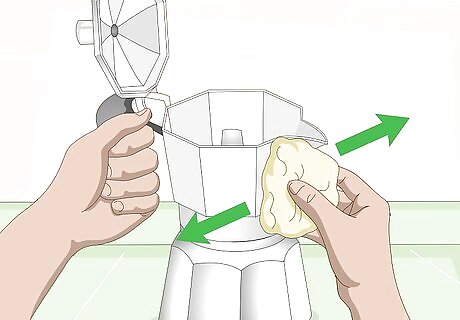
Restore the pot's shine. Dish soap dulls the pot's shine, but it's necessary to use occasionally in order to prevent coffee oils from growing rancid. If you miss that shine, don't worry. Whether your pot is aluminum or stainless steel, polish the outside as needed to restore its luster.
Replace gaskets. Expect rubber gaskets to deteriorate over time. This means that an old gasket will form a less secure seal for the filter at the bottom of the server, which in turn means coffee grounds may end up where they're not supposed to be. Replace old gaskets as needed to ensure a clean cup of coffee. [Image:Clean a Moka Pot Step 12.jpg|center]]




















Comments
0 comment